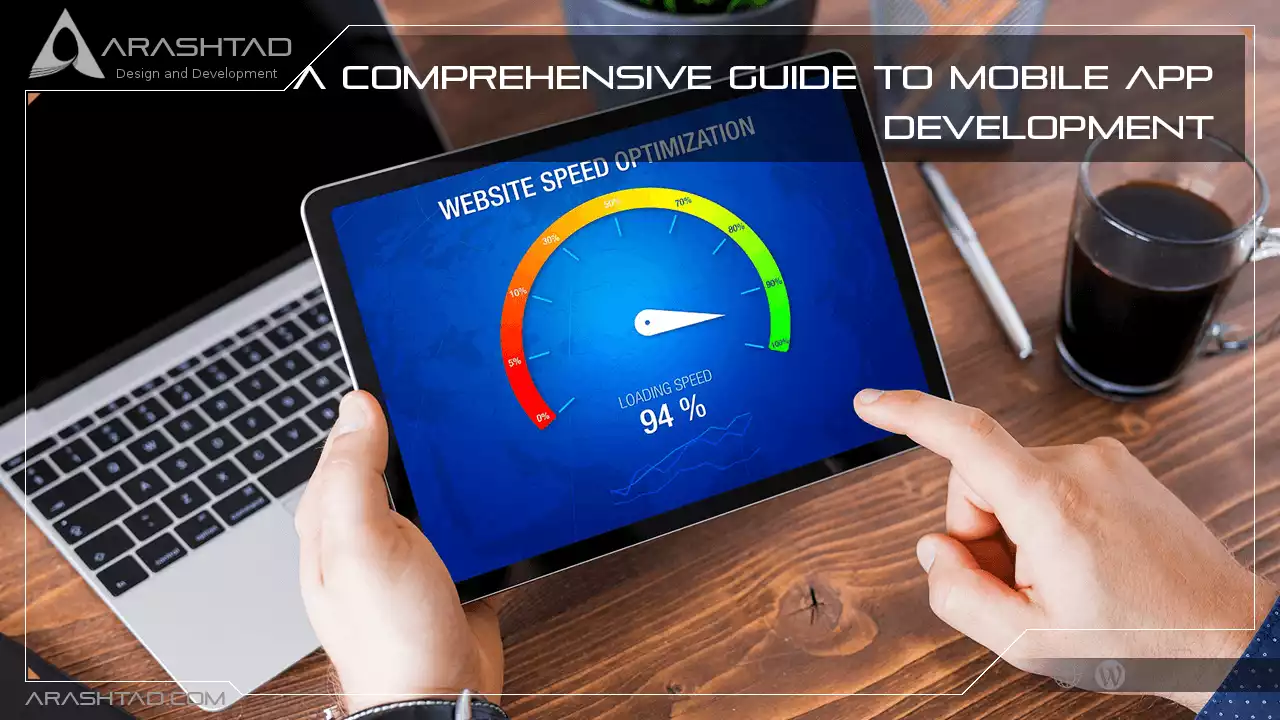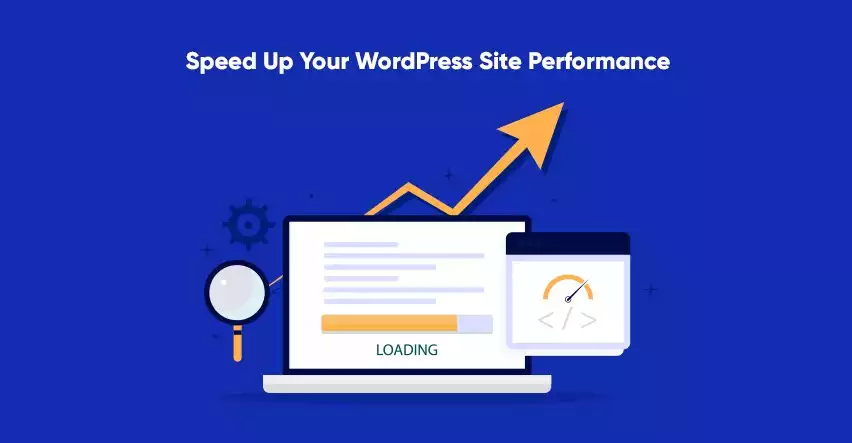How to Speed Up Your WordPress Site: In-Depth Guide
It would be best if you considered the speed at which your WordPress website loads as one of the most important factors when building a successful one. In addition to improving conversion rates, which leads to more significant sales, site speed is one of Google’s and other search engines’ ranking signals. You won’t be able to make more money if your site is slow. This guide will show you how to speed up your WordPress website so your visitors have a great experience with your business.
Why is the speed of your WordPress Site Important?
There are many reasons for speed, but the three most important are visitor experience, search engine optimization, and conversion rate. Let’s examine each one.Visitor Experience
It is common knowledge that waiting for a page to load is a pain, especially since so many websites can load pages in under a second. According to Google, a long load time will cause 53% of visitors to leave a website. Poor design choices can cause the page to load slowly and fail to load correctly, which guarantees a visitor will never return.Search Engines
It has been widely stated that website speed is one of the factors that search engines consider when ranking your site. Search engines are supposed to help users find websites that provide the information they are seeking quickly. Speed can drastically impact that experience, as we just discussed. Thus, search engines prioritize rankings for faster sites as a top priority.Conversion Rates
In retail sites, a 0.1-second improvement can increase conversion rates by 8.4%. Every millisecond counts when a shopper considers making a purchase. Online stores place a high value on speed. It also means shoppers can load more product pages, making their shopping cart more likely to fill up. Simply put, speed leads to more sales.How to Check Your WordPress Website Speed?
Page load times should be under 2 seconds. However, the faster they can be, the better. a few milliseconds of improvements here and there can save you half a second or even a full second. First and foremost, you need to analyze the loading time of your website. It is important to note that this speed varies from page to page, as it is affected by a variety of factors, including the size of the page, the number of requests it generates, whether it is cached or not, and finally, the type of content it hosts. There are three tools widely used to check the speed of a website:Google PageSpeed Insights
A powerful tool such as Google PageSpeed Insights can help you identify major flaws that are slowing down your load times. In fact, it is the best place to start when you’re trying to figure out what needs to be improved. The tool provides a score and highlights problem areas on your website. Among them are minifying CSS, JS, and HTML. However, it does not give you a specific speed.GTMetrix
You can run GTMetrix as a free optimization plugin from within your website. It shows two separate scores, one from Google PageSpeed Insights and one from YSlow, a metric that GTMetrix uses to analyze mobile performance. It’s great to get two reference points on your website without leaving it. By comparing the data, you can identify problem areas and fix them.WebPageTest
A free tool like WebPageTest allows you to test your page speed in real-time. It identifies which factors are affecting your speed. It also provides separate scores for security, first-byte time, and other factors. And yes, this tool tells you the exact amount of time it takes to load a page down to the millisecond, so it’s convenient.How to Speed up WordPress sites
You can speed up WordPress sites by following these 7 steps:1- Choose Fast WordPress Hosting
WordPress hosting plays a significant role in determining how fast your website performs. Hosting your new website on a shared hosting provider that offers “unlimited” bandwidth, space, emails, and domains might seem like a good idea. Despite this, we often fail to notice that shared hosting environments cannot deliver fast loading times during peak traffic hours and do not provide 99 percent uptime in any given month. Because you’re sharing your server space with countless other websites, and you don’t know how many resources they’re using and what optimization the servers have, shared hosting is likely to deliver a poorer performance. With the advancement of technology, the web hosting industry has improved, and cloud hosting providers have become more affordable with time. Today, you can buy dedicated cloud servers at a nominal cost from SiteGround, DigitalOcean, Amazon Web Services, and even Google Compute Engine. However, it is challenging to set up those servers since they need to be set up from scratch. However, there are hosting providers like Cloudways that make the process of setting up optimized cloud servers as simple as clicking a button.2- Optimize Media Files
Every website needs images and videos, and unfortunately, there’s one downside to them as well. They are large files, which can negatively impact your website’s load time. However, optimizing the file sizes can prevent this entirely. For images, the average file size should be around 150kb at most. If you want to shrink an image file further, you can use a compression tool. If you’re using WordPress, you must not host the videos yourself. Instead, embed the videos on your website and host them on YouTube. When you use tools like WP Rocket’s Lazy Load to replace the actual JS-embedded script with placeholder thumbnails, you save server resources and speed up page loading.3- Use advanced caching mechanisms with a caching plugin
Caching is an essential process that allows your website to make a copy of static pages so that they can be displayed to visitors using advanced caching mechanisms. In other words, instead of loading a page from scratch, the website already knows what it needs to display. To achieve this in WordPress, you will need a caching plugin, and there is no shortage of options. In fact, we highly recommend every website has a caching, backup, and security plugin installed.4- Deactivate or uninstall plugins
You will add a tremendous amount of junk when you keep unwanted plugins on your WordPress website. Furthermore, you will have to worry about a lot of extra storage space on your server while backup files are created. It’s a good idea to get rid of plugins you don’t use and look for alternative methods to automate or schedule tasks (such as sharing your latest posts on social media). You can automate such tasks by using IFTTT or Zapier, which reduces the load on your website.5- Use A Lightweight Theme
Themes enable you to customize the appearance of your website in WordPress, but that’s only part of what they do. They also have many features that impact the performance of your website. The keyword to look for when choosing a theme is “lightweight.” This means that the theme was created with speed in mind. These themes also offer minimalist designs, meaning the content is paramount. For websites with great images, minimalist themes are a great choice because they make the images the focus. One solution is to choose a default WordPress theme or order lightweight themes from WordPress experts of Arashtad’s team.6- Minify CSS, JS, and HTML
WordPress has the advantage of not requiring you to write any code. However, in some cases, you may want to write some code. Yet, each CSS, JS, or HTML call slows down your website. You can speed up WordPress by minifying these files and reducing the number of API calls. One of the simplest ways to do this is to use the Autoptimize plugin. This plugin minifies all of the code, making it lightweight. As a matter of fact, Autoptimize effectively reduces PageSpeed Insights and GTmetrix Cumulative Layout Shift scores. Some plugins may even add custom code without your knowledge, which this plugin will help you detect and minimize.7- Turn Off Pingbacks and Trackbacks
You will receive a pingback or trackback notification when your blog or page receives a link. Although it might sound helpful, you can also check the links of your website using Google Webmaster Tools and other services. The use of pingbacks and trackbacks can also strain your server resources. This is because WordPress requests you back and forth to do so each time someone links up to your site. In addition to this functionality being widely abused when DDoS attacks are being conducted on a website, you can turn it all off in WP-Admin > Settings > Discussion. Deselect “Allow link notifications from other blogs (pingbacks and trackbacks).” This will help WordPress run faster.Conclusion
When you reduce your website’s loading time, you will significantly improve the experience of your visitors. This applies whether they are using mobile devices or computers. You will also gain better rankings in the SERPs as well. After all, reducing your hosting bandwidth usage and speeding up site loading will benefit you both short- and long-term. If you haven’t started a website yet, follow this guide: How to Create WordPress Website for free in Minutes. It offers step-by-step instructions for building a website.Download this Article in PDF format

Arashtad Custom Services
In Arashtad, we have gathered a professional team of developers who are working in fields such as 3D websites, 3D games, metaverses, and other types of WebGL and 3D applications as well as blockchain development.
Arashtad Services
Drop us a message and tell us about your ideas.
Fill in the Form
Blockchain Development


